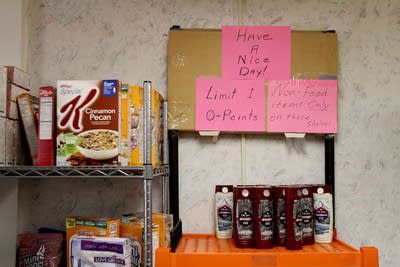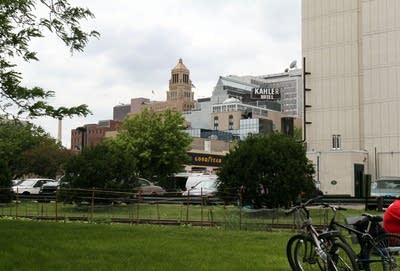Rochester development could push poor from downtown

The ambitious 20-year redevelopment plan to remake the area surrounding Mayo Clinic into a leading medical community could displace the city's poor and homeless who live downtown.
Developers have their eyes on downtown property and are willing to pay top dollar for it, particularly the spots closest to Mayo. But turning the city's core into an attractive destination could push poor people — and the agencies that serve them — out of downtown.
Four of the six Salvation Army properties in Rochester are in the immediate area. A fifth Salvation Army building within the proposed redevelopment zone is several blocks south.
County property records estimate their combined market value at nearly $6 million. But city officials say developers are offering as much as four times market value for downtown properties.
Create a More Connected Minnesota
MPR News is your trusted resource for the news you need. With your support, MPR News brings accessible, courageous journalism and authentic conversation to everyone - free of paywalls and barriers. Your gift makes a difference.
Over the next two decades, Mayo plans to spend $3.5 billion in capital improvements at its Rochester campus. The expansion could attract at least $2.1 billion in additional private investment.
Converting the downtown area into a welcome zone for more Mayo patients and Rochester visitors could push out people like Mike Weldon and Jerry Upton. Both men are homeless and staying at the Dorothy Day Hospitality House, a temporary shelter eight blocks from the Salvation Army.
Weldon, 53, has lived in Rochester for 15 years. He is legally blind and unable to drive. For him, being downtown is a big factor in his survival, particularly during the winter months when he comes to the city library and the skyway to escape the cold.
"If they moved away from it, nobody would have any place to stay warm because [at] Dorothy Day you have to be out at 9 and you can't go back 'til 4," he said. "So if you don't have those places available to get inside out of the elements, you're screwed pretty much."
Upton, 47, said the homeless center and its surroundings have helped him as he tries to emerge from drug and alcohol addiction.
"It's really giving me a lot of hope," he said of the downtown area. "Being an alcoholic and addict since I was 13, this is the first time I really think I'm going to make it. So I hope they don't change too much."

The Salvation Army's dilemma is twofold, said Dave Ferber, the agency's director of community engagement. Its first problem is its location in a part of the city that is attractive to developers. Ferber said the agency receives at least one phone call a month from a developer interested in buying its properties.
"A lot of people are saying we're sitting on that gold mine," he said. "But the challenge is that everybody's property is appreciating, and so it's really going to take us two gold mines to move. "We're back to that square one."
The second problem, Ferber said, is the challenge of picking the right place to move. The Salvation Army currently serves about 8,500 people a year in Rochester, providing shelter, food and healthcare services. Many of them live in the city's core.
It's unclear, he said, if downtown growth would move the population out of that area.
"Where will those people end up?" Ferber asked. "And if they move to the north [or] if they move to the south in town, do we follow them? Do we physically pick up and move to follow a population that we serve?"
Redevelopment will lead some organizations to move, said Rochester Mayor Ardell Brede, who sits on the board of the Destination Medical Center Corp., the entity planning the redevelopment projects.
The board recently adopted a plan to help guide downtown development. It shows the blocks where the Salvation Army is currently located as mixed-use parcels that likely would include some residential housing and parking in the future.
At a recent board meeting, members set priorities for the plan's biotechnology business and commercial districts, as well as transportation. They've talked about the ramifications downtown development will have on social service programs, but Brede said those discussions are still in early stages.
He acknowledged, however, that keeping groups like the Salvation Army downtown will be a challenge moving forward given the demand for land there, where property values are expected to skyrocket.
"To have them be able to be kind of immune to some that is going to be tough," Brede said.
Ferber, of the Salvation Army, said its current locations are expected to be among the final areas developed downtown. But he said the organization needs to consider its future.
"You know, I've told people it's a bright shiny thing they're building that will attract a lot of people and not everyone will share ... in that success," he said. "So we just have to prepare for that."


